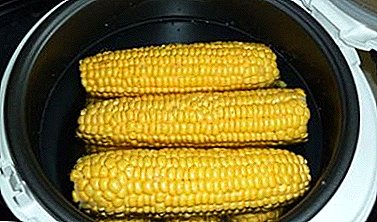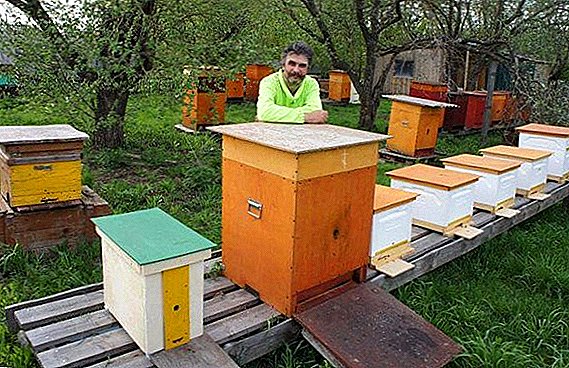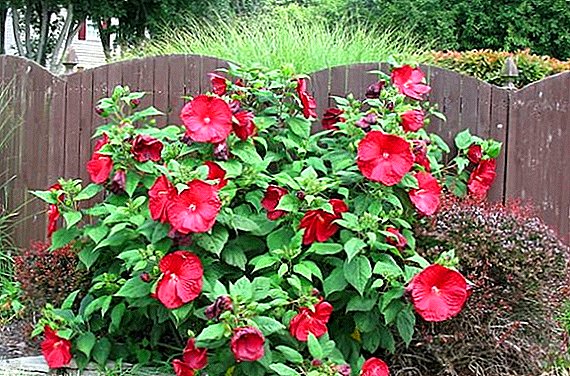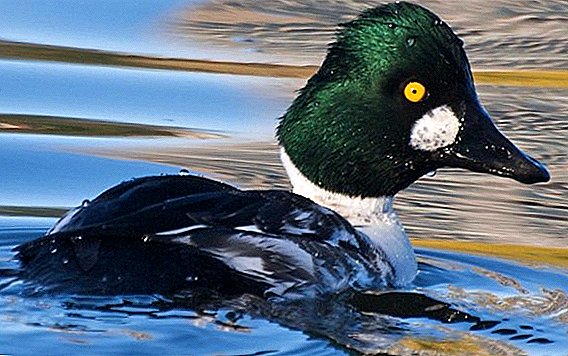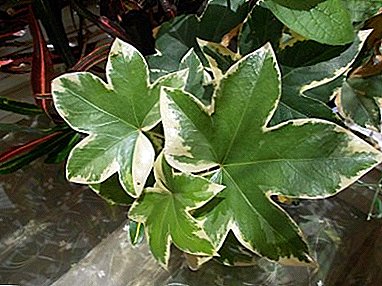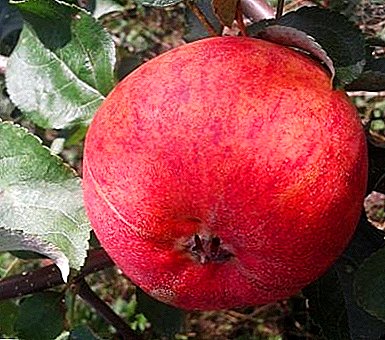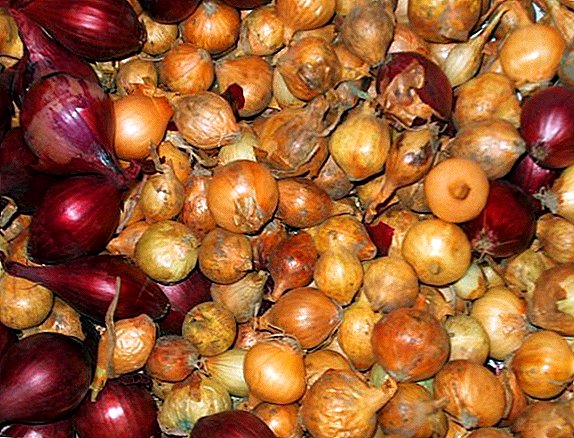 Of great importance in cooking, as well as in folk medicine, are the usual and everyday for all the results of the cultivation of onion and garlic varieties. That is why each gardener or vegetable grower diligently grows them on their plots in order to please themselves and their loved ones not only with healthy food, but also with a beautiful decoration of a garden or a border - there are also decorative types of edible plants. This article presents all kinds of onions and garlic, as well as a detailed description of their advantages and disadvantages.
Of great importance in cooking, as well as in folk medicine, are the usual and everyday for all the results of the cultivation of onion and garlic varieties. That is why each gardener or vegetable grower diligently grows them on their plots in order to please themselves and their loved ones not only with healthy food, but also with a beautiful decoration of a garden or a border - there are also decorative types of edible plants. This article presents all kinds of onions and garlic, as well as a detailed description of their advantages and disadvantages.
Onion
Perhaps onions are the most common species among all the others but despite this, it also amazes with its varieties. It seems that the same vegetable at the same time can be stinging, and its representative, but of a different sort, can be juicy, sharp or hard.

Did you know? It turns out that the onion is a very respectable age plant, and the roots of its fame reach even Ancient Egypt. There on the most ancient mural in the tomb (2800 BC) images of this culture were found.Among the whole onion family, gardeners almost always prefer the bulb type. Most often it is grown from a onion set, which can be obtained from seeds on its own or purchased from a specialty store. Immediately after the purchase, the sets should be carefully warmed and dried, so in a warm and dry place it should be spread out in a thin layer. Then the prepared material is treated with a growth stimulator and disinfected, after which it becomes fully ready for planting.
Important! Planting onions in unheated soil is not desirable, because then he simply goes to the arrow. Long wait with a landing is also not worth it. Otherwise, green feathers will develop very quickly, and the bulb will lag behind in development and remain the same small size.
 It is necessary to plant seedlings in rows in rows, while not forgetting to keep a distance of about 20 cm between them. This is necessary so that plantings are better ventilated and it is more convenient to handle them. And sevka should be from each other at a distance of 5 to 10 cm, the correct figure depends on what is the diameter of the prepared onion. Then they should be compressed tightly with earth and covered with mulch (layer 3 cm) from above.
It is necessary to plant seedlings in rows in rows, while not forgetting to keep a distance of about 20 cm between them. This is necessary so that plantings are better ventilated and it is more convenient to handle them. And sevka should be from each other at a distance of 5 to 10 cm, the correct figure depends on what is the diameter of the prepared onion. Then they should be compressed tightly with earth and covered with mulch (layer 3 cm) from above.The first shoots, as a rule, appear a week after planting. For proper development, they should now be well looked after, and, above all, this applies to weekly watering. It is also important to remember about liquid fertilizers, the onion loves them very much and can not go to the greens for a long time without top dressing. Loosening the soil is carried out several times a week, and weeding - as needed.
And about September, you can think about harvesting, you need to do this when the bulbs are already beautiful golden color, and the feathers have not appeared for a long time. When all the conditions of cultivation and care are fulfilled, all types of onions and garlic that he conceived will grow from the economic land user.
Shallot

Shallot is a variegated variety of onions. It received its name in Europe, in Ukraine it is called the bush, and in Russia and Moldova - the little family. In one nest, shallots can develop from 3 to 20 onions weighing from 10 to 50 g. Feathers are much softer and thinner than in other species, and have a rather weak waxy shade.
To properly grow and care for the family, You need to pay attention to some features of these processes:
- It can be planted in the prepared soil in the middle of April, as it is hard to shoot and completely indifferent to frost.
- Wet humus-sand loams are rightly considered the best soils for shallot.
- Planting material needs to be updated more often, so that the bulbs do not have an infection called gray rot.
- If you grow this species for the use of greenery, then the planting pattern is almost identical with the planting of the bulb, the distance between the rows is 20 cm, and between the onions - 10 cm.
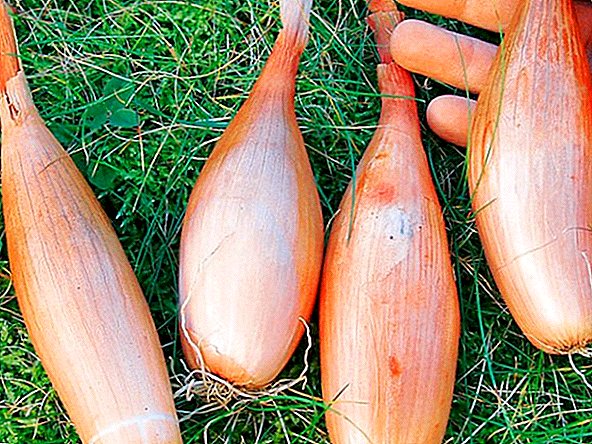
Harvesting occurs when the "family" will make more than 50% of feathers on a sunny and warm day.
You need to store only healthy bulbs at a temperature of 1-3 degrees, for this purpose a box or a box is selected. It is important to remember that onion nests should not be separated during storage.
This unpretentious and at the same time unusual view has long struck the hearts of gourmets around the world, because shallots have high palatability, is easy to prepare, and most importantly is the absence of an unpleasant odor after it is eaten.
Leek

Leek is considered perhaps the most versatile plant among connoisseurs, and all due to its cold resistance, high yield and valuable biochemical composition. It is grown all over the world, mainly in the temperate zone, as it adapts well to almost all environmental conditions. Leek is grown by sowing seeds into the ground or through seedlings.
In our area, only the second method is used, since the first involves too long vegetation. For good leek development, the soil should be loose and highly fertile, medium loams are excellent for the description. Land for land preparation is usually dug up in the fall to the depth of the arable layer. The best predecessors for this powerful vegetable are legumes, potatoes, cucumbers and cabbage.
Important! It is impossible to plant an onion vegetable in the ground, where its relatives had grown before. Otherwise, in the future, it may be pursued by diseases and common rot.

Like other varieties of onion plants, it is necessary to moisten the leek on time, the most effective way is to irrigate the furrows. With regard to care, he is not whimsical at all, everything is done according to the standard - loosening, weeding and feeding. But, besides this, a good idea would be to mulch the planting of plants with leaves and peat - this will help preserve moisture and prevent the development of weeds.
Did you know? Leek is the national symbol of Wales and is depicted on a coin of 1 pound sterling.The onions are harvested as necessary (as they are ripened), shoveled undermined, shaken off and put into prepared beforehand boxes in a vertical or connected form. It is necessary to remove dirty and damaged leaves from the collected plants, and also to cut the roots and leaves by one third. The best way to store this powerful vitamin will be packaging in plastic wrap and refrigeration. The optimum storage temperature should be between -2 and +2 ° C, and it should be kept at the same level whenever possible.
Batun

The variety of onion-batun does not practically differ in appearance from the well-known onion, however, this species is grown only for greenery, since it does not form a bulb at all. The batun has rather large leaves that can grow to 40 cm and up to 2 cm in circumference.
Despite the fact that this onion is able to grow in the same place for about 10 years, it still shows the greatest performance for 3-4 years after sowing.
Another pleasant difference of the batun from the rest of the onion "family" is the highest level of frost resistance, for it you can easily prepare a homemade film greenhouse with a temperature of only 11-12 degrees. And the seeds of this non-capricious plant can germinate already at two degrees of heat, but the best option for the fastest germination, of course, will be about 20 degrees.
There are no difficulties or special differences in planting at the batun, seed can be sown in early spring and even in February windows, and in this case tasty leaves can already be obtained in the month of July.
If reproduction occurs in a vegetative way, the perennial bushes of this species must be divided into parts, about five plants per grass. 
For early harvest in spring, transplanting should be done by mid-August.
Important! For sowing in early spring, the seeds must be used dry and calibrated; if they are repeated, then the seeds must be prepared in advance, soaking them before a single bite.In the case of a batun’s disembarkation, the recommended distance between rows should be 30-40 cm, and the seed embedment depth should be approximately 2 cm.
Onions can be harvested in two ways, depending on the type of cultivation: if the plant is planned as an annual, the seeds are sown in the spring and then dug out completely, and if it is a perennial, the greens are cut once or twice in the spring and then in the fall.
Cut the leaves should be when their length becomes from 20 to 25 centimeters. Stored sections in the refrigerator, previously placed in a plastic wrap.
Schnitt

As in the case of batun, the onion plant Schnitt is grown exclusively to produce tasty and fresh greens. In Siberia, it is called Rezan or Rezun, in the northern part of Russia - shnitt-onion, and in the south it is called a skoroda or tribulka. Homeland Schnitt is considered to be North China and Mongolia.
This plant, unfortunately, is undervalued in our area, and therefore it is grown in relatively small volumes. But it is a real source of various vitamins and elements, and it is quite often included in therapeutic diets for people with kidney diseases and the cardiovascular system.
Another important advantage is the excellent frost resistance of shnitta, its young shoots can easily withstand negative frost, an adult plant is able to withstand temperatures of even -8 degrees.
Caring for this unusual product is basically the same as for other species, it is moisture-loving and loves fertilizing from organic and mineral fertilizers. 
The bulbs do not form this specimen, but at the same time are distinguished by a great capacity for branching. The root system is fibrous, well developed and usually begins to be updated by mid-summer.
Prior to the sifting of chives, special attention is paid to the preparation of the soil, because, because of its miniature seeds, seedlings initially appear very weak, like a small loop, so they must be very carefully protected from weeds.
Sowing is carried out in the grooves to a depth of 2 cm, and the distance between rows should be a maximum of 45 cm. It is also better to mulch crops in time with humus, peat or sawdust, not forgetting timely loosening, so that the mudcake formed after heavy rains does not prevent the emergence of fresh shoots .
When the air temperature is 18-20 degrees, the leaves of the chives grow extremely quickly and are ready to be cut in 12-14 days. Harvesting is usually started when cracked boxes appear in umbrellas and black seeds are clearly visible. After assembly and drying in a ventilated room, delicious leaves are kept in the refrigerator.
Slizun

Slyzun bow - is a herbaceous perennial plant, which is rarely found on the suburban areas. Such an attitude to this species is not at all justified, because the slizun, in fact, is a very useful and valuable instance. In addition, it is completely different in taste from other species, with its use it is possible to note a well perceptible garlic note.
The plant itself has a very beautiful decorative appearance, so it can easily be planted on the garden plots just for the sake of pleasing the eye.
Slizun has very strong frost-resistant qualities and is able to withstand the harsh 40-degree temperature, is also absolutely indifferent to pests and brings harvest for 5 years.
The soil for cultivation is better to choose sandy or slightly loamy, so that in no case does it contain melt and ground water, which can block the access of air and provoke the death of the bulb. In autumn, the land should be filled with rotted manure and humus, not forgetting about standard mineral fertilizers. 
Slizun are usually propagated in a vegetative way, as this gives a faster yield. You can sit it in August or September, or in early spring. To do this, you need to dig up three-year bushes and divide the rhizome into parts, while you need to make sure that each tree has its part and 3-4 bulbs.
Propagation by seeds is also easy, for this at the end of April, winter seedlings are sown in open ground in depressions of about 1 cm. Then the grooves are lightly powdered with a thin layer of soil, moistened with a spray bottle and covered with a film.
Caring for a slizun is no different from caring for other types of onions. In the very first year, only a few feathers form in the bushes, in the second - it blooms, and in the third - it is already possible to organize a full cut of the leaves.
Multi-tiered
 Tiered onions is an extremely useful perennial plant and is cultivated in many countries around the world. It has not received due distribution in our vegetable growers, although in its biologically active composition it seriously surpasses the rest of the onion species.
Tiered onions is an extremely useful perennial plant and is cultivated in many countries around the world. It has not received due distribution in our vegetable growers, although in its biologically active composition it seriously surpasses the rest of the onion species.
The leaves of the vegetable are hollow, fistulous, and for a long time they retain a non-bruised look. Underground bulbs are very similar to the onions, but, unlike them, they do not have time to mature properly and, as a rule, are very poorly stored, but they have high taste qualities, and their presence on the table will bring pleasure to the hosts and guests. 
The multi-tier is very cold-resistant, it keeps at a small snowy carpet and even at a temperature of forty degrees centigrade, and its young leaves are able to withstand temperatures of -5 ° C. Unpretentious to the soil, but it should not be acidic. The predecessors may be plants under which organic fertilizers are applied.
Usually planted with many-tiered bulbs at the end of summer or early autumn, always keeping to a bed of about 10-15 cm. Unlike the rules for the rest of onion plantations, this species should be planted immediately after the rain, then it will root faster and better, which means perezimuet well in underground conditions.
Garlic
 Growing garlic in the summer cottage benefits the gardener not only in the culinary sense, but also helps other garden crops to scare away such pests as caterpillars and slugs.
Growing garlic in the summer cottage benefits the gardener not only in the culinary sense, but also helps other garden crops to scare away such pests as caterpillars and slugs.
Two main types are very popular among consumers - spring and winter garlic. Growing technology is quite simple, but some interesting rules also need to be followed. For example, it should be remembered that the culture is very fastidious to the soil, it needs to be grown only on neutral soil of sandy and loamy type. Forget about light-loving garlic, too, should not be.
Strawberries, strawberries, cucumbers, onions, tomatoes, gooseberries, raspberries and black currants are good neighbors for him, and roses, tulips and gladioli are made of flowers: he protects them from black spot.
It is possible to multiply garlic only in a vegetative way, since it does not form seeds at all. Spring breeds with the help of chive bulbs, and winter - with chives and air bulbs. Before planting, the teeth are calibrated and disinfected, and, if desired, it can be slightly germinated to accelerate the growth rate. 
Spring garlic is usually planted in April or May, as soon as the soil warms up to at least +5 ° C. The depth of planting depends on the height of the clove, which is multiplied by 2, and mainly amounts to 5-6 cm. Immediately after planting garlic, the flower bed must be mulched, and the distance between plantings should be set to about 18-20 cm.
Springs of spring garlic usually appear at a temperature of + 3-4 ° С and do not react to frosts. If the summer in the region is hot enough, the soil must be mulched with light material. Watering is different and depends on the growth period: in the active phase it should be abundant, in the maturation phase it should be moderate, since an excess of moisture can cause the bulging of the bulbs and the development of unnecessary diseases.
Feeding should be carried out 2 times: in the spring - cow dung, and in the summer - with a solution of ordinary ash. With the necessary mulching of garlic soil, loosening and weeding can be forgotten, as well as reducing the regularity of irrigation at times.
As for the planting of winter garlic, it is carried out in the middle of autumn, and they are not particularly in a hurry so that the teeth do not give premature growth and are more resistant during the cold period. 
Land for planting needs to be prepared in advance, it is necessary to make grooves, on the bottom of which pour a light layer of coarse sand or ash. The depth for planting winter garlic should be more pronounced, approximately 15 cm. On top of the beds it is necessary to lay mulch, which will protect the teeth from frost, it may include peat or sawdust. Caring for this type is the same as for spring.
Unfortunately, during the growing season, garlic can become ill with diseases such as black mold, various types of rot, or downy mildew. Attacking pests can also interfere with peaceful rearing, usually onion flies, larvae or four-legged garlic mites. Главная профилактика против всех этих проблем заключается в правильной подготовке почвы, в выбранном здоровом посадочном материале и избавлении от больных растений. А предотвратить нападение вредителей всегда помогает соседство чеснока с календулой или цикорием. 
Now, taking advantage of the information in this article, anyone, even a beginner amateur gardener, can easily distinguish between onion and garlic types thanks to their detailed description with photos and names, and to delight themselves and their loved ones with a wonderful and rewarding crop.


